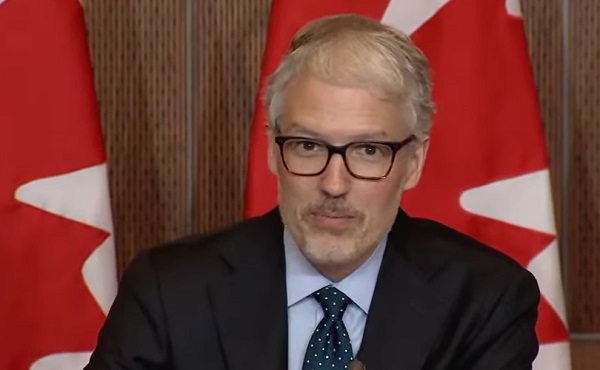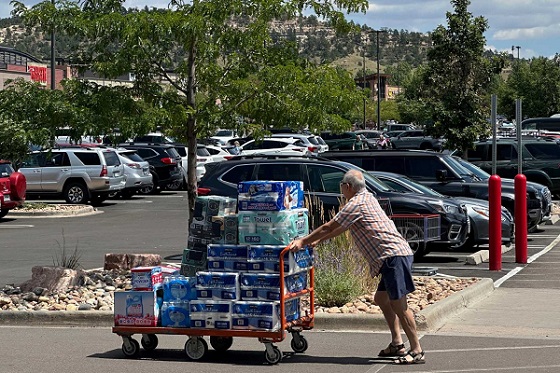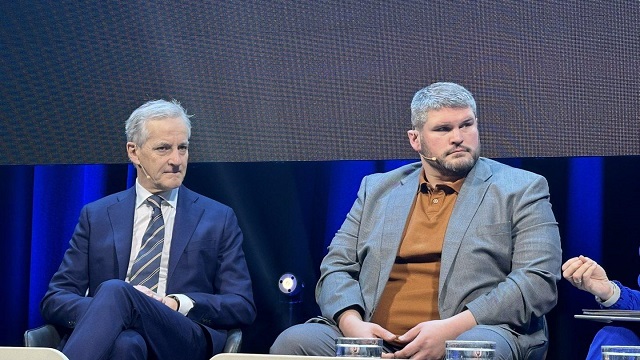Uncategorized
Caravan migrants explore options after Tijuana border clash

TIJUANA, Mexico — Many among the more than 5,000 Central American migrants in Tijuana were urgently exploring their options amid a growing feeling that they had little hope of making successful asylum bids in the United States or of crossing the border illegally.
Most were dispirited on Monday, a day after U.S. agents fired tear gas into Mexico to turn back some migrants who had breached the border. They saw the clash and official response as hurting their chances of reaching the U.S.
There was a steady line outside a shelter at a tent housing the International Organization for Migration, where officials were offering assistance for those who wanted to return to their home countries.
Officials also reported more interest from migrants wanting to start the process staying in Mexico. A job fair matching migrants with openings in Baja California saw a growing number of inquiries.
“What happened yesterday harms all of us,” Oscar Leonel Mina, a 22-year-old father from San Salvador, El Salvador, said about Sunday’s border clash.
Mina and his wife and their toddler daughter avoided the march and were glad they did after hearing others recount what unfolded, he said as he sat in the doorway of his family’s tent at Tijuana sports complex using a toothbrush to clean the fine dust that coats everything off his sneakers.
At the tent next door, 23-year-old Brandon Castillo of Santa Rosa, Guatemala chimed in that “they say it was the whole caravan, but it wasn’t the whole caravan.”
The events made Mina rethink his family’s plan of making it to the U.S. He says he’s heard people talk of Rosarito, a beach town popular with U.S. tourists about a 40-minute drive south of Tijuana.
There “you can earn money and live well” if you’re willing to work, he said. He set a goal of trying to move his family out of the shelter in another week.
Mexican security forces stepped up their presence at the complex where thousands from the migrant caravan have been sheltered, apparently seeking to avoid a repeat of Sunday’s ugly scene.
Tijuana public safety secretary Marco Antonio Sotomayor Amezcua said in a news conference that Mexican police would be prudent in their use of force, but “we have to guard at all cost that the border posts are not closed again.”
Sotomayor said he hopes migrants who had thought of entering the U.S. illegally learned from Sunday’s events that that won’t be possible.
Migrants hoping to apply for asylum in the United States must put their names on a waiting list that already had some 3,000 people on it before the caravan arrived in Tijuana. With U.S. officials processing fewer than 100 claims a day, the wait time for the recent arrivals stands to take months.
That has instilled a sense of desperation among many after their grueling trek from Central America. Sunday’s incident began after hundreds marched to the border to try to call attention to their plight. Some attempted to get through fencing and wire separating the countries, prompting volleys of stinging gas.
Cindy Martinez of San Vicente, El Salvador, said she had been about to cross the concertina wire to the U.S. side when the tear gas was launched. She estimated about 20 people had already passed in front of her, and parents begged agents not to unleash the gas because there were young children present.
“I see it as impossible for them to want to give us asylum,” she said. “Because of the words that President Donald Trump has said, I think this is impossible.”
Martinez, 28, said she was now considering getting work in Tijuana.
Mexico’s National Migration Institute reported that 98 migrants were being deported after trying to breach the U.S. border. The country’s Interior Department said about 500 people attempted to rush the border, while U.S. authorities put the number at 1,000.
Baja California state Gov. Francisco Vega said almost 9,000 migrants were in his state — mostly in Tijuana, with a smaller number in Mexicali — and called it “an issue of national security.” Vega issued a public appeal to Mexico’s federal government to take over responsibility for sheltering the migrants and deport any who break the law.
Alex Castillo carried a red bedroll slung over his shoulder as he walked away from the Tijuana shelter on Monday, saying he would head to the industrial city of Monterrey to look for work and try to cross into the United States next year.
The 35-year-old electrician from Tegucigalpa, Honduras, said he wasn’t at the border clash. He heard about it from others and decided to leave “to avoiding getting beaten.”
Christopher Sherman, The Associated Press
Uncategorized
CNN’s Shock Climate Polling Data Reinforces Trump’s Energy Agenda


From the Daily Caller News Foundation
As the Trump administration and Republican-controlled Congress move aggressively to roll back the climate alarm-driven energy policies of the Biden presidency, proponents of climate change theory have ramped up their scare tactics in hopes of shifting public opinion in their favor.
But CNN’s energetic polling analyst, the irrepressible Harry Enten, says those tactics aren’t working. Indeed, Enten points out the climate alarm messaging which has permeated every nook and cranny of American society for at least 25 years now has failed to move the public opinion needle even a smidgen since 2000.
Appearing on the cable channel’s “CNN News Central” program with host John Berman Thursday, Enten cited polling data showing that just 40% of U.S. citizens are “afraid” of climate change. That is the same percentage who gave a similar answer in 2000.
Dear Readers:
As a nonprofit, we are dependent on the generosity of our readers.
Please consider making a small donation of any amount here.
Thank you!
Enten’s own report is an example of this fealty. Saying the findings “kind of boggles the mind,” Enten emphasized the fact that, despite all the media hysteria that takes place in the wake of any weather disaster or wildfire, an even lower percentage of Americans are concerned such events might impact them personally.
“In 2006, it was 38%,” Enten says of the percentage who are even “sometimes worried” about being hit by a natural disaster, and adds, “Look at where we are now in 2025. It’s 32%, 38% to 32%. The number’s actually gone down.”
In terms of all adults who worry that a major disaster might hit their own hometown, Enten notes that just 17% admit to such a concern. Even among Democrats, whose party has been the major proponent of climate alarm theory in the U.S., the percentage is a paltry 27%.
While Enten and Berman both appear to be shocked by these findings, they really aren’t surprising. Enten himself notes that climate concerns have never been a driving issue in electoral politics in his conclusion, when Berman points out, “People might think it’s an issue, but clearly not a driving issue when people go to the polls.”
“That’s exactly right,” Enten says, adding, “They may worry about in the abstract, but when it comes to their own lives, they don’t worry.”
This reality of public opinion is a major reason why President Donald Trump and his key cabinet officials have felt free to mount their aggressive push to end any remaining notion that a government-subsidized ‘energy transition’ from oil, gas, and coal to renewables and electric vehicles is happening in the U.S. It is also a big reason why congressional Republicans included language in the One Big Beautiful Bill Act to phase out subsidies for those alternative energy technologies.
It is key to understand that the administration’s reprioritization of energy and climate policies goes well beyond just rolling back the Biden policies. EPA Administrator Lee Zeldin is working on plans to revoke the 2010 endangerment finding related to greenhouse gases which served as the foundation for most of the Obama climate agenda as well.
If that plan can survive the inevitable court challenges, then Trump’s ambitions will only accelerate. Last year’s elimination of the Chevron Deference by the Supreme Court increases the chances of that happening. Ultimately, by the end of 2028, it will be almost as if the Obama and Biden presidencies never happened.
The reality here is that, with such a low percentage of voters expressing concerns about any of this, Trump and congressional Republicans will pay little or no political price for moving in this direction. Thus, unless the polls change radically, the policy direction will remain the same.
David Blackmon is an energy writer and consultant based in Texas. He spent 40 years in the oil and gas business, where he specialized in public policy and communications.
Uncategorized
Kananaskis G7 meeting the right setting for U.S. and Canada to reassert energy ties


Energy security, resilience and affordability have long been protected by a continentally integrated energy sector.
The G7 summit in Kananaskis, Alberta, offers a key platform to reassert how North American energy cooperation has made the U.S. and Canada stronger, according to a joint statement from The Heritage Foundation, the foremost American conservative think tank, and MEI, a pan-Canadian research and educational policy organization.
“Energy cooperation between Canada, Mexico and the United States is vital for the Western World’s energy security,” says Diana Furchtgott-Roth, director of the Center for Energy, Climate and Environment and the Herbert and Joyce Morgan Fellow at the Heritage Foundation, and one of America’s most prominent energy experts. “Both President Trump and Prime Minister Carney share energy as a key priority for their respective administrations.
She added, “The G7 should embrace energy abundance by cooperating and committing to a rapid expansion of energy infrastructure. Members should commit to streamlined permitting, including a one-stop shop permitting and environmental review process, to unleash the capital investment necessary to make energy abundance a reality.”
North America’s energy industry is continentally integrated, benefitting from a blend of U.S. light crude oil and Mexican and Canadian heavy crude oil that keeps the continent’s refineries running smoothly.
Each day, Canada exports 2.8 million barrels of oil to the United States.
These get refined into gasoline, diesel and other higher value-added products that furnish the U.S. market with reliable and affordable energy, as well as exported to other countries, including some 780,000 barrels per day of finished products that get exported to Canada and 1.08 million barrels per day to Mexico.
A similar situation occurs with natural gas, where Canada ships 8.7 billion cubic feet of natural gas per day to the United States through a continental network of pipelines.
This gets consumed by U.S. households, as well as transformed into liquefied natural gas products, of which the United States exports 11.5 billion cubic feet per day, mostly from ports in Louisiana, Texas and Maryland.
“The abundance and complementarity of Canada and the United States’ energy resources have made both nations more prosperous and more secure in their supply,” says Daniel Dufort, president and CEO of the MEI. “Both countries stand to reduce dependence on Chinese and Russian energy by expanding their pipeline networks – the United States to the East and Canada to the West – to supply their European and Asian allies in an increasingly turbulent world.”
Under this scenario, Europe would buy more high-value light oil from the U.S., whose domestic needs would be back-stopped by lower-priced heavy oil imports from Canada, whereas Asia would consume more LNG from Canada, diminishing China and Russia’s economic and strategic leverage over it.
* * *
The MEI is an independent public policy think tank with offices in Montreal, Ottawa, and Calgary. Through its publications, media appearances, and advisory services to policymakers, the MEI stimulates public policy debate and reforms based on sound economics and entrepreneurship.
As the nation’s largest, most broadly supported conservative research and educational institution, The Heritage Foundation has been leading the American conservative movement since our founding in 1973. The Heritage Foundation reaches more than 10 million members, advocates, and concerned Americans every day with information on critical issues facing America.
-
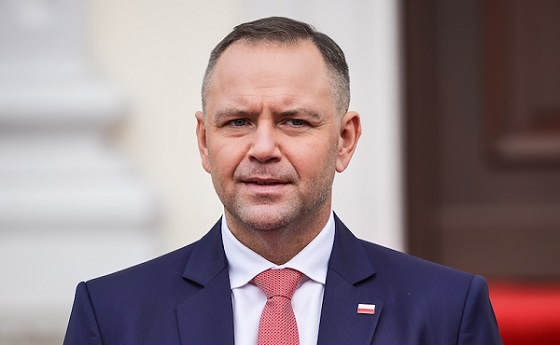
 International2 days ago
International2 days agoPoland’s president signs new zero income tax law for parents with two children
-
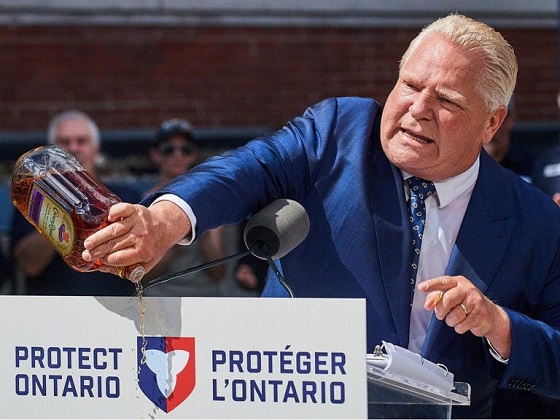
 Business2 days ago
Business2 days agoFord’s Whisky War
-

 Agriculture14 hours ago
Agriculture14 hours agoIs the CFIA a Rogue Agency or Just Taking Orders from a Rogue Federal Government?
-
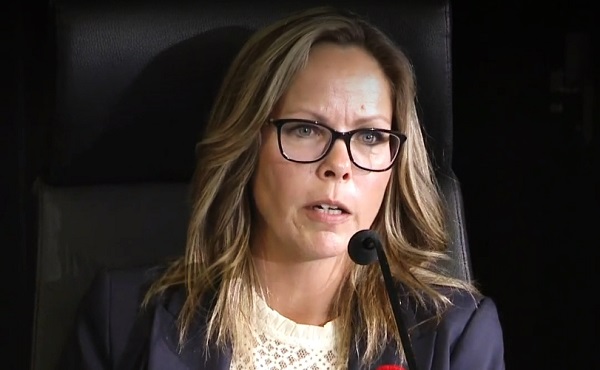
 COVID-192 days ago
COVID-192 days agoFreedom Convoy leader Tamara Lich says ‘I am not to leave the house’ while serving sentence
-
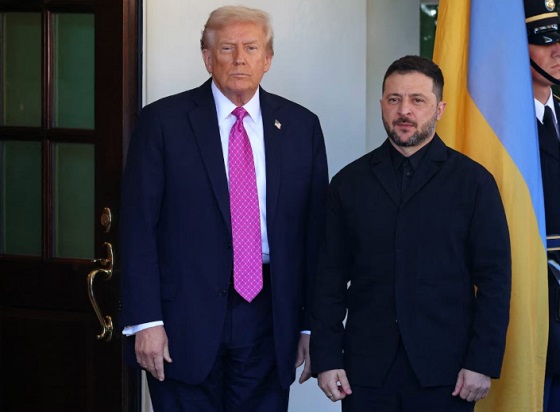
 Focal Points2 days ago
Focal Points2 days agoTrump Walks Back His Tomahawk Tease from Zelensky
-

 Business23 hours ago
Business23 hours agoTrump Blocks UN’s Back Door Carbon Tax
-

 Business23 hours ago
Business23 hours agoJudges are Remaking Constitutional Law, Not Applying it – and Canadians’ Property Rights are Part of the Collateral Damage
-
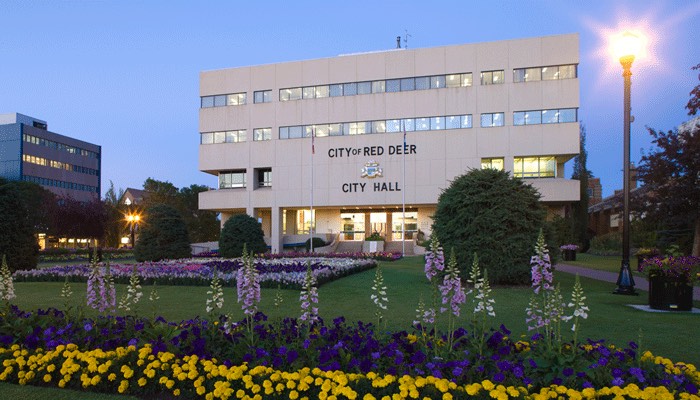
 Red Deer22 hours ago
Red Deer22 hours agoYour last minute election prep: Common Sense Red Deer talks to the candidates
